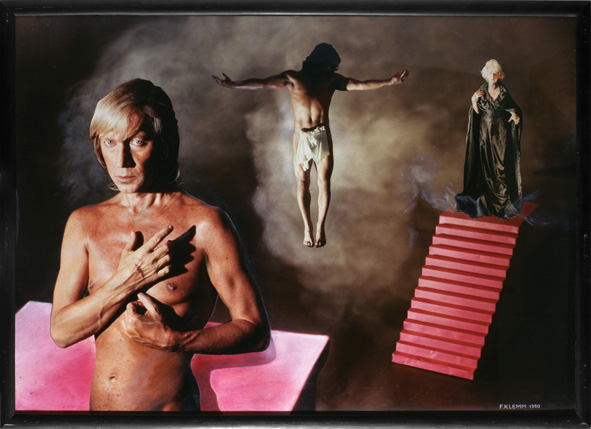Federico Klemm was an eminent collector, patron of the arts, visionary, pioneer in the management of art foundaCons, and a pioneering performer in gender issues: queer before queer; a digital photographer before the massive use of this medium locally; and we can also say, a philanthropist, who believed in “art for everyone”. Federico Jorge Klemm was born on 25 March 1942 in Czechoslovakia, and it was in 1948 that the family decided to sePle in Buenos Aires. As a self-taught painter, and with a marked arVsVc inclinaVon from a very early age, he studied the work of Toulouse Lautrec, Picasso, Van Gogh and some ArgenVnean painters who impressed him from the age of 14. He also studied lyrical singing with Ruzena Horakova and drama with Marcelo Lavalle, perfecVng his learning of painVng in the workshops of contemporary ArgenVnean arVsts. A[er compleVng his secondary studies, he came into contact with the InsVtuto Di Tella, and was very impressed by the new manifestaVons of art, mini-art, art death, and other arVsVc forms derived from applied and audiovisual art. It was within this arVsVc-cultural space that Klemm parVcipated in various happenings, such as Oscar MasoPa’s Meat Joy, or audiovisual shows such as Oh Sólida Carne, which he staged with Chela Barbosa and in which he played the role of Hamlet. There, he also had the opportunity to meet different personaliVes of the environment such as Edgardo Giménez, Marta Minujín, Jorge Romero Brest and Marta Romero Brest, Nicolás García Uriburu, Mildred Burton, Dalila Puzzovio, Luisa Mercedes Levinson, among others. With the closure of the Di Tella, he deployed this audiovisual imagery of combinatory elements to project it in various happenings and performances, together with other renowned visual arVsts, in alternaVve spaces such as art galleries, discotheques, writers’ circles, and other places where avant-garde audiences congregated.


 Klemm Federico
Klemm Federico